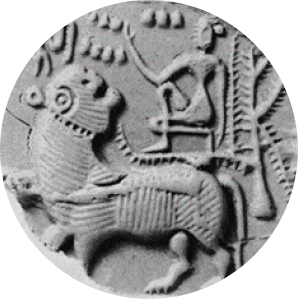In the evening I read and listened to a couple of interviews by David Godman, a disciple of Ramana Maharshi. He was born in 1953 and in 1976 arrived in Tiruvannamalai, intending to stay a few weeks. He said he had a little money in his pocket, which would eventually run out, after which he planned to return home to the UK. Life worked out otherwise, and he ended up staying for good. He said that at a certain point, the mountain indicated to him that he could stop thinking about his return or worrying about how to support himself. It was his destiny to be there, under the shadow of Arunachala, like so many before him, including Ramana himself.
In 1977 I traveled to India after completing a yoga course of the Sivananda organization. I’d actually been on my way to Tel Aviv, where I had promised to join the staff of the yoga vedanta center. But while on the way, in Greece, I had decided to delay my arrival a bit in order to go overland to Rishikesh, and visit the ashram where Swami Vishnu Devananda had learned and practiced. I spent about a month in India, and then bought my ticket to Tel Aviv. I thought I would be spending just a few months or a year in Israel/Palestine and indeed after 6 months I returned back to the US. However, something drew me back again to the yoga center in Tel Aviv. I realized that I had begun to feel at home there. I ended up staying in Israel/Palestine just like Godman ended up staying in Tiruvannamalai, almost over the same period.
A couple of days ago I watched a wonderful feature movie called The Violin Player. At 112 minutes, it is fairly short for a feature film, but its slow and measured pace gives depth to it. Only in the final minute, or perhaps when the titles begin to roll at the end, is the film properly understood. There, there is a quotation of something Pablo Picasso apparently said: “Art washes away from the soul the dust of everyday life”.
In South India every morning the women go out and deftly draw in powder a simple or elaborate design known as kollam or rangoli. Being there at the gate, the design gets stepped on and smudged throughout the day, so by the end of the day there isn’t much left of it. The following morning, the woman of the house obliterates what’s left of it and quickly traces a new kollam.
In temples and ashrams, there is an even more elaborate ceremony. In powder or coloured grains of rice, complex yantras are drawn and worshiped. The last time I was at Ramanashram I saw this. At the end of the ceremony, these wonderful yantras are deliberately destroyed, to indicate impermanence.
I’m thinking that sometimes the pattern of life is not obvious or clear to us while we are living it. It is covered and obscured with dust. The plot and its significance may become clear, if at all, only in our final moments.
In the mind of the universe, the underlying pattern is always there, whether we understand it or not. Every flower, every snowflake conceals an elaborate geometry. In our ordinary lifetimes, a hidden pattern gradually emerges and reveals itself , only to be swept away in the sudden act of our death. This must surely happen, in order that a new pattern may be drawn.
